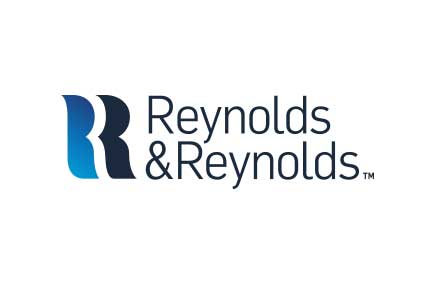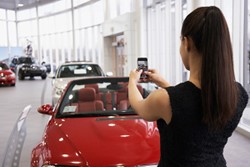Fewer COVID-19 Restrictions Means More Changes to Your Marketing Strategy

Article Highlights:
- Identify appropriate budgets and channels of communication.
- Tailoring is more important than ever.
In this episode of our video podcast, Connected, Jared Klein, Sales Director at Naked Lime Marketing, gives tips on how dealerships can start to adjust their marketing strategy as COVID-19 restrictions lessen.
Greg Uland: Hello, I’m Greg Uland, marketing director at Reynolds and Reynolds, and this is Connected, the podcast with best practices and ideas to help navigate what is happening in the automotive retail industry and the world today. As the COVID-19 virus continues to change our world and how we live and work daily, this podcast discusses ways to continue operating in this unprecedented social environment. On today’s episode, we have with us Jared Klein, sales director at Naked Lime Marketing. Jared, thanks so much for joining.
Jared Klein: No problem. Thanks for having me.
GU: Absolutely. Jared, when you think about advertising and advertising strategy, there’s a lot of pieces that have to be in place ahead of going out and executing. As we’re inching closer to some states opening up the economy, I wanted to talk with you today about what an advertising strategy looks like coming out of this COVID-19 situation.
JK: Clearly every dealership is different. Every city is different, every region is different right now. The first thing we need to use as a guiding principle is to be as personalized as we can be when talking to our consumers moving forward. Every person, every family is being impacted differently and they’re reacting differently to the marketing that is being put in front of them. Personalizing that message will be more important than ever moving forward. Likely shifts from broad advertising where you’re targeting thousands of consumers with the same message will be shifted towards more of a personalized, individual message moving forward.
If you’re going to spend the money on that broad message or campaign, then you should be leveraging social proof. Show that consumers are getting out, buying vehicles from your dealership, showing that they believe your store is safe today. This is going to be an important piece of the advertising puzzle moving forward, rebuilding that trust and comfort level with consumers coming into your store.
GU: That makes sense. And you mentioned every dealership’s unique. It certainly is. But in a general sense, as things start to shift and we start to move forward out of this, what impact do you think dealers should expect it to have on budget and advertising costs?
JK: Again, every dealership is going to be different and that’s going to vary by region when you look at the advertising budget coming out of this. The largest piece of our budget that we need to look at is the actual spend on the advertising itself. How much are we going to be spending on Google ads moving forward, or TV/radio campaigns coming out? Typically those are going to remain fairly consistent as we move forward unless you’re spending a lot of money on high funnel or broad advertising. In that case, some of those dollars likely will go away.
The next cost that you can look at is the creative assets we’re going to need to create. The pictures, the videos, graphics, website content. Likely those costs are going to increase as we have a need for more variations moving forward. When you start targeting and segmenting to an individual level, the messages and creative assets need to be unique for that person, that individual, or that subset of individuals. And again, because of that, the cost is likely to increase because we’re going to need more assets for it.
And the third piece of that is the targeting and the execution. Who are we communicating with and how are we going to be getting our message to those customers? That’s going to include email, digital ads, and all of the mediums we’re going to have. Again, that goes back to the more unique communications that need to be created, likely causing the cost to go up as well. You know, coming out of this, you’re likely not going to see your advertising budget increase right away. But as we move forward and the shift towards more targeting becomes the norm, down the road, you’ll likely to see that increase.
GU: That’s fair, and obviously the hope is that the sales will be there to support that as well. Jared, you mentioned a couple of different ways to send out communications. Are there any specific channels or mediums that might be a good place to start to focus on coming out of this situation and moving forward?
JK: I wouldn’t say specifically any one medium or anything to go after coming out of this. But make sure that your proactive advertising and your reactive advertising line up. It all compliments each other. And let me give you an example of that. Ford is offering to defer three payments and pay the first three payments of the vehicle, and you decide to amplify that message with a specific piece of inventory that you have on your lot. When you target customers across Facebook, you need to make sure that you have Google ads ready to capture those customers that are viewing that ad on Facebook. So that when those consumers Google your store name, or more likely that vehicle, that they’re seeing similar ads and ad content that they saw on Facebook. You know, make sure that you have the same message across multiple mediums moving forward.
GU: Makes sense. It sounds simple, but it’s so difficult to execute in a lot of ways. And to your point, it’s certainly going to be much more important going forward than it ever was in the past. Jared, I definitely appreciate you hopping on and taking some time out of your day to talk with us. While we’re here and while we have the audience, is there anything else that you’d want to touch on or anything that you want to say?
JK: Really the most important thing is to handle what’s in front of you today. As we get closer to social restrictions being lifted or being lessened across the country, make sure everything today is taken care of. Then give yourself time to strategize and make the most of your marketing moving forward when everything gets lessened.
GU: Jared, again, I do appreciate you hopping on today.
JK: Yep. Thank you.
GU: Thank you. This has been Connected. Stay safe and we’ll see you on the next episode.
Continue to tune in often to see new episodes on best practices and tips for navigating the automotive industry during this unprecedented time.
Related Articles:
70 percent of consumers turn to YouTube for things like reviews, test drives, or comparison analyses during their car-buying process, according to Millward Brown Digital.…
When I was ready to purchase my first vehicle, I was full of excitement. I thought nothing could bring me down and the only challenge…
For as long as I can remember, my family had “pizza night” every week. Without fail, every Friday evening we’d all gather around the computer…
Everybody enjoys a good musical performance. The singer producing an amazing melody on the microphone and the band backing them up with their instruments. The…



















